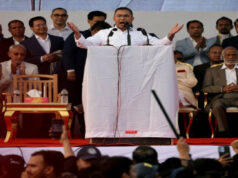The election of Sanae Takaichi as Japan’s first woman prime minister marks a historic political moment, but also signals a potential shift in regional dynamics and global markets. Deepa Gopalan Wadhwa, India’s former ambassador to Japan, says the development is significant not just for Tokyo, but also for New Delhi and the wider world.
Takaichi, known for her conservative leanings and hawkish security views, has long been seen as a protégé of former Prime Minister Shinzo Abe. Wadhwa notes that her rise reflects a continuation of Abe’s policy legacy, particularly efforts to make Japan a “normal nation” in military terms. While constitutional revision to loosen Japan’s postwar pacifist restraints may be difficult, Wadhwa expects Takaichi to push for reinterpretations that allow a more assertive security posture—moves that will be closely watched in Beijing and Seoul.
For India, Wadhwa sees largely positive trends. Japan has been a close strategic partner, especially under Abe, with defence and technology ties deepening over the past 15 years. Takaichi’s emphasis on security and increased defence budgets is expected to further bolster cooperation. With the U.S. appearing less invested in the Indo-Pacific, India and Japan may find even greater convergence in addressing regional security challenges, including those posed by China.
On the economic front, markets have already reacted: the Nikkei index surged, and the yen weakened after her election. Wadhwa points out that Japan’s global economic weight means these shifts will ripple outward, affecting U.S. Treasury markets and global trade flows. For India, Takaichi’s background as economic security minister could mean more Japanese investments in critical sectors like semiconductors, energy, and defence.
However, challenges remain. Takaichi’s campaign rhetoric included anti-foreigner and anti-tourism themes, reflecting domestic anxieties over immigration and overtourism. Yet, Japan’s demographic decline leaves little choice but to rely on immigrants and foreign workers, including skilled Indian professionals. Wadhwa expects people-to-people exchanges, particularly in technology and services, to continue growing despite conservative undercurrents.
Ultimately, Wadhwa believes India-Japan ties are on stable footing, with bipartisan support in both countries ensuring continuity. Takaichi’s tenure may sharpen Japan’s strategic profile and reinforce its partnership with India, even as her policies test the balance between conservatism at home and pragmatism abroad.
In a career spanning three decades and counting, Ramananda (Ram to his friends) has been the foreign editor of The Telegraph, Outlook Magazine and the New Indian Express. He helped set up rediff.com’s editorial operations in San Jose and New York, helmed sify.com, and was the founder editor of India.com.
His work has featured in national and international publications like the Al Jazeera Centre for Studies, Global Times and Ashahi Shimbun. But his one constant over all these years, he says, has been the attempt to understand rising India’s place in the world.
He can rustle up a mean salad, his oil-less pepper chicken is to die for, and all it takes is some beer and rhythm and blues to rock his soul.
Talk to him about foreign and strategic affairs, media, South Asia, China, and of course India.




